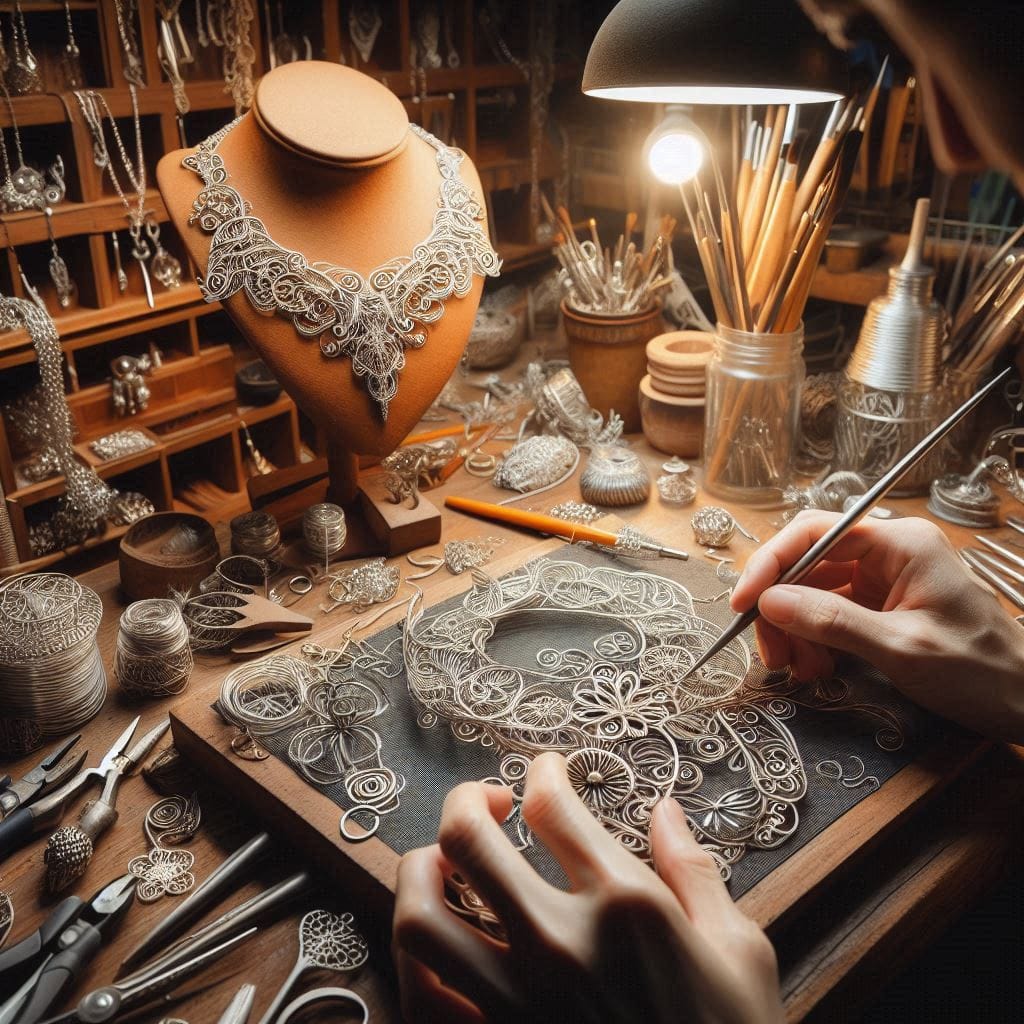Once upon a time, in the ancient lands of Mesopotamia, a delicate art form began to take shape. This art, known as filigree, involved twisting fine threads of gold and silver into intricate patterns. The artisans of Mesopotamia were among the first to master this technique, creating stunning pieces of jewelry that adorned the nobility and the wealthy.
As centuries passed, the art of filigree spread across the world. In ancient Egypt, filigree jewelry became a symbol of status and power. The Egyptians used this technique to create elaborate necklaces, earrings, and bracelets, often incorporating precious gemstones and beads. The beauty of filigree jewelry was not only in its intricate designs but also in the skill and patience required to create each piece.
The art of filigree continued to evolve during the Roman Empire. Roman artisans refined the technique, creating even more intricate and delicate designs. Filigree jewelry became highly sought after, and Roman women adorned themselves with these exquisite pieces to display their wealth and sophistication.
During the Middle Ages, Artisan filigree jewelry found its way to Europe. The art form flourished in regions such as Italy and Spain, where skilled craftsmen created breathtaking pieces that were often used in religious artifacts and royal regalia. The intricate patterns and delicate craftsmanship of filigree jewelry made it a favorite among European nobility.
In the 16th and 17th centuries, filigree jewelry reached new heights of popularity during the Renaissance. The revival of classical art and culture inspired artisans to create even more elaborate and intricate designs. Filigree jewelry became a symbol of the Renaissance’s artistic achievements, and pieces from this period are still highly prized by collectors today.
The art of filigree continued to thrive in the 18th and 19th centuries, with artisans in India and the Middle East creating stunning pieces that showcased their unique cultural influences. Indian filigree jewelry, known for its intricate patterns and use of precious gemstones, became highly sought after by European collectors.
Today, the art of filigree jewelry is still alive and well. Modern artisans continue to create breathtaking pieces that pay homage to the ancient techniques while incorporating contemporary designs. Filigree jewelry remains a symbol of timeless beauty and craftsmanship, a testament to the skill and creativity of the artisans who have kept this art form alive for thousands of years.
And so, the story of filigree art jewelry continues, a delicate thread woven through the tapestry of history, connecting the past with the present and inspiring future generations of artisans to create their own masterpieces.
Have you got a favorite or unique piece of Filigree Art Jewelry? Browse our beautiful collection of artisan jewelry.

